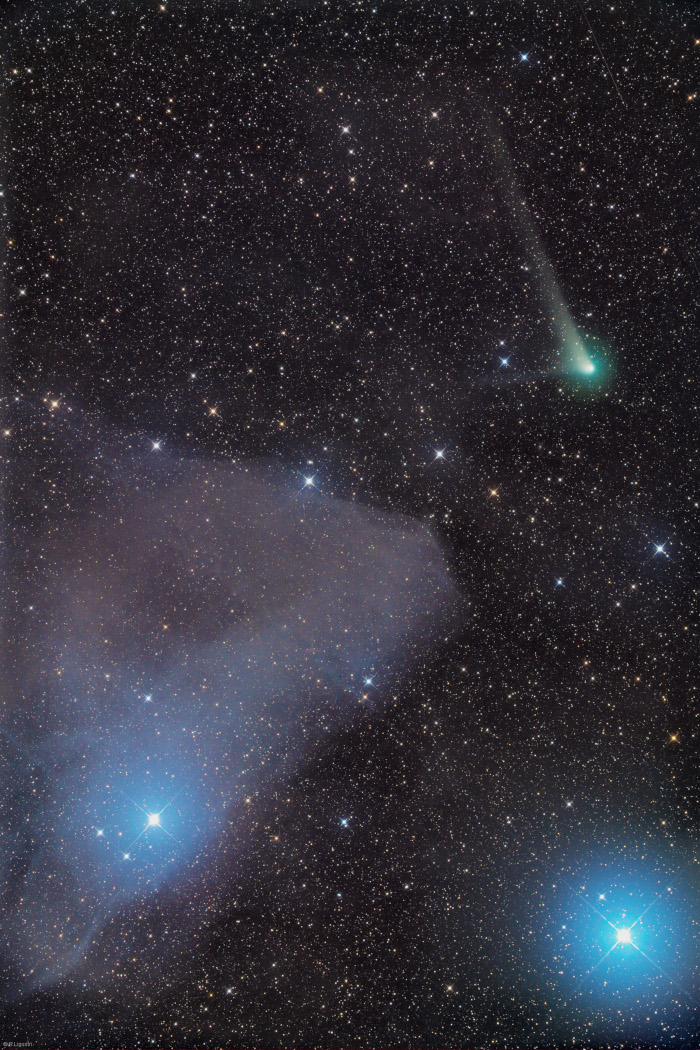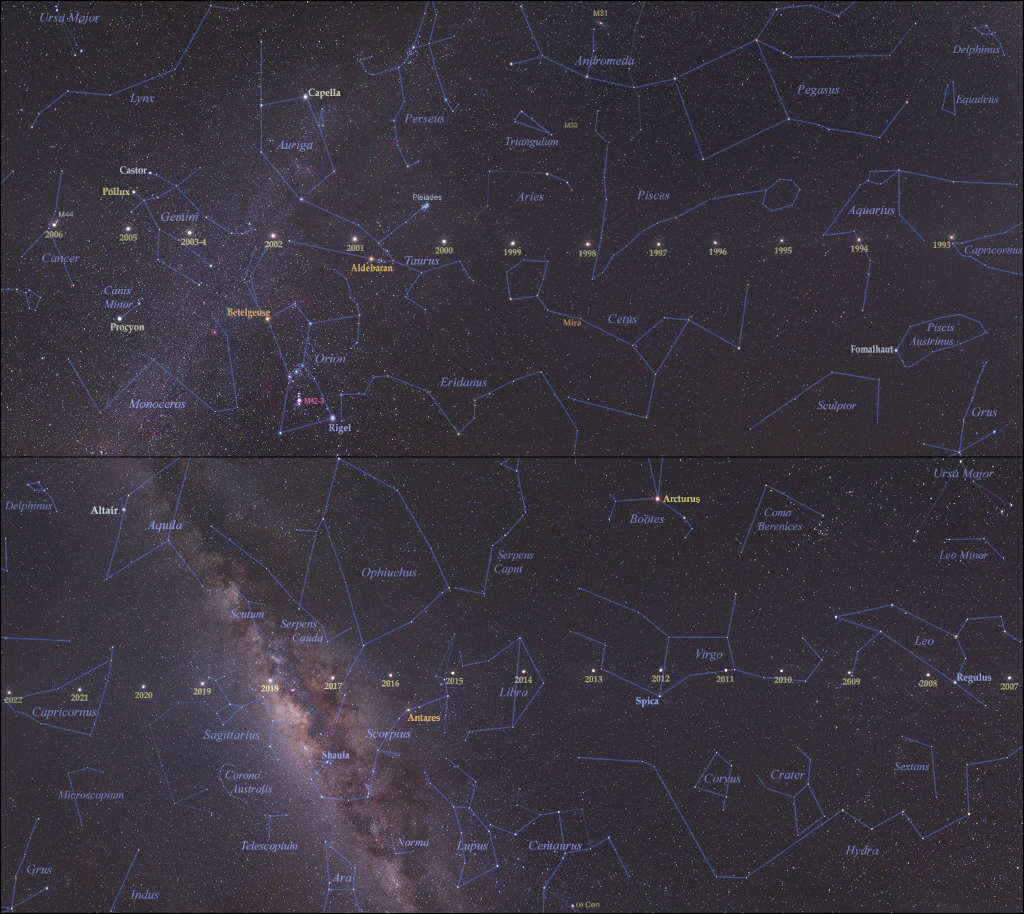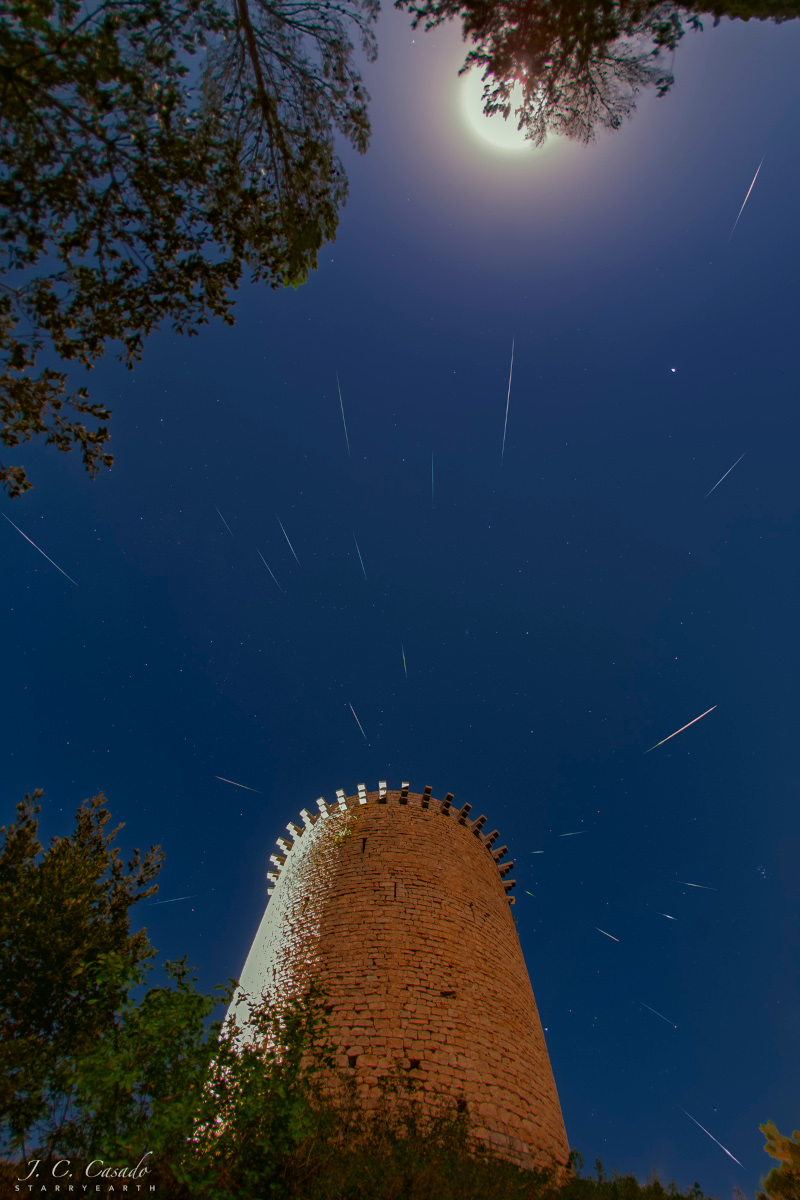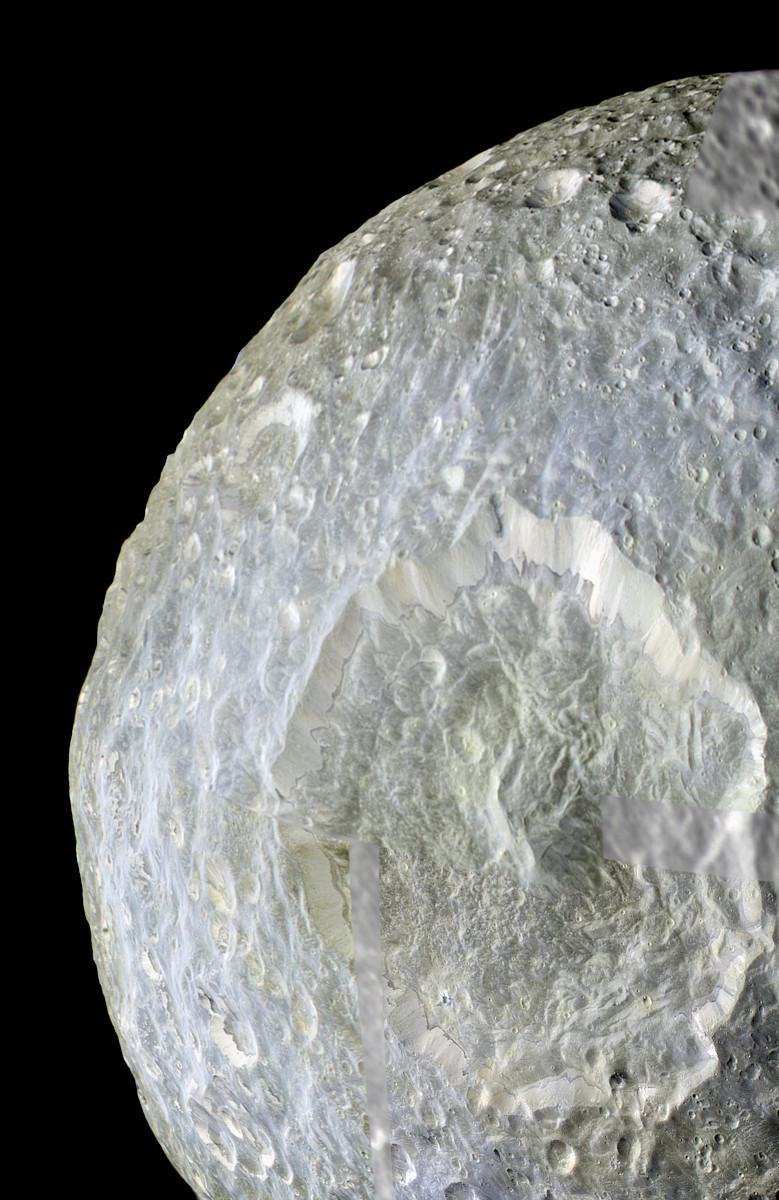
Heading for its closest approach to the Sun, or perihelion, on December 19 comet C/2017 K2 (PanSTARRS) remains a sight for telescopic observers as it sweeps through planet Earth’s skies in the constellation Scorpius. The comet currently sports a greenish coma, long whitish dust tail, and short ion tail in this deep image from August 18. The 2×3 degree wide field of view includes part of the dusty nebula IC 4592 reflecting blue starlight. Also known as the Blue Horsehead Nebula, IC 4592 is about 400 light-years distant while the comet is just under 17 light-minutes away. First spotted at a distance well beyond the orbit of Saturn C/2017 K2 is on its maiden voyage to the inner solar system, a pristine visitor from the remote Oort cloud. via NASA https://ift.tt/mzu2M4T








